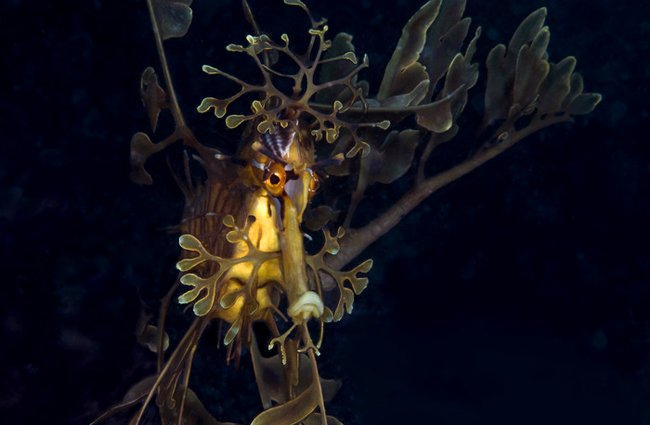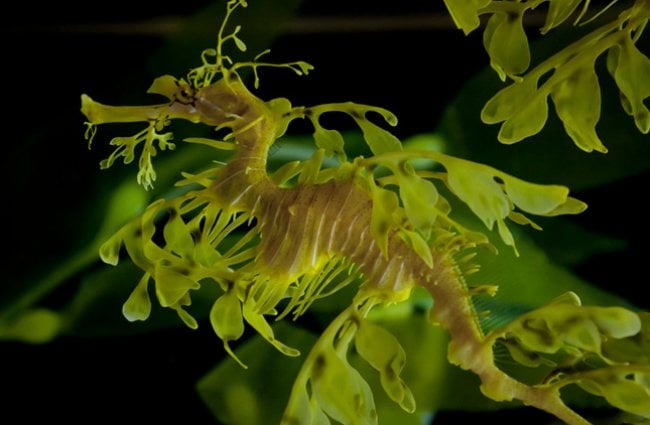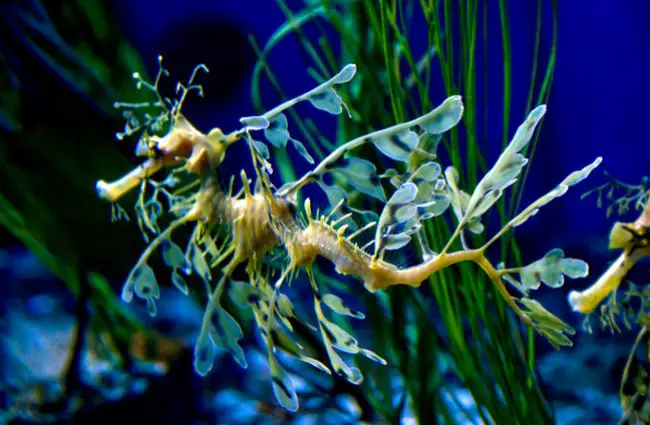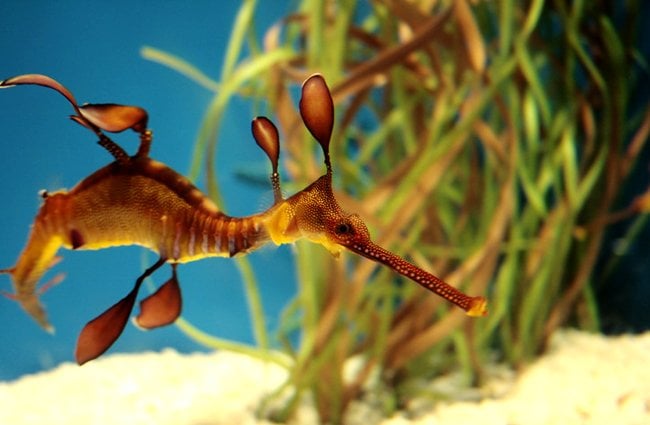The world’s oceans hold a mesmerizing array of life, but few creatures capture the imagination quite like the Sea Dragon. Often shrouded in myth and legend, these remarkable marine animals are far more than fantastical beasts. They are a testament to the power of evolution, a vital component of the oceanic ecosystem, and a source of wonder for all who encounter them.

What is a Sea Dragon?
The term “Sea Dragon” typically refers to one of several species within the Phycodurus and Phyllopteryx genera, commonly known as leafy seadragons and weedy seadragons. Both are members of the Syngnathidae family, which also includes seahorses and pipefish. These incredible animals are native to the temperate waters of southern and western Australia. Unlike the larger, more widely known dragons of mythology, sea dragons are relatively small, growing to a maximum length of around 18 inches (45 centimeters). Their bodies are covered in leaf‑like appendages, providing exceptional camouflage among seaweed and kelp forests.
Habitat and Distribution
Leafy and weedy seadragons are exclusively found in the coastal waters of southern and western Australia. They prefer rocky reefs, seaweed beds, and kelp forests, typically at depths of up to 50 meters (164 feet). The weedy seadragon has a broader distribution, ranging from the coast of New South Wales to Western Australia, whereas the leafy seadragon’s range is limited to the southwestern coast of Western Australia. These habitats provide shelter from predators, abundant food sources, and essential breeding grounds.

Evolutionary History
The evolutionary origins of sea dragons are fascinating. They share a common ancestor with seahorses and pipefish but diverged millions of years ago. The development of the elaborate leaf‑like appendages is believed to be a result of natural selection, providing increasingly effective camouflage. The ancestors of sea dragons likely inhabited environments where blending in with seaweed was crucial for survival, both for ambushing prey and avoiding predators. Over time, the appendages became more complex and numerous, culminating in the stunning camouflage we see today.
Diet and Feeding Habits
Sea dragons are carnivorous, with a diet primarily consisting of small crustaceans such as shrimp and mysid shrimp. They are ambush predators, relying on their camouflage to blend seamlessly with their surroundings. They use suction feeding to capture their prey, rapidly inhaling water to draw the crustaceans toward their mouths. This method is highly efficient and allows them to consume small prey quickly. Their diet is closely linked to the availability of mysid shrimp, which are often found in dense swarms within seaweed beds.

Mating and Reproduction
The reproductive behavior of sea dragons is particularly unique. Unlike most fish, the male takes on the primary responsibility for caring for the eggs. During mating season, the male develops a brood patch on his underside. The female deposits her eggs onto this patch, where they are fertilized. The male then carries the eggs until they hatch, providing them with oxygenated water and protecting them from predators. This incubation period can last for several weeks. The number of eggs carried varies but can be as high as 250. Once the young sea dragons hatch, they are independent and must fend for themselves.
Ecological Role and Interactions
Sea dragons play a vital role in the oceanic ecosystem. As predators, they help to control populations of small crustaceans. They also serve as prey for larger fish and marine mammals, contributing to the food web. Their presence is an indicator of a healthy marine environment. Sea dragons are particularly sensitive to changes in water quality and habitat degradation. Sea dragons interact with other species in several ways. They often share their habitat with seahorses and pipefish and may compete for resources. They also benefit from the shelter provided by seaweed and kelp forests.

Sea Dragons and Human Interaction
Historically, sea dragons were sometimes harvested for traditional medicine and curios. However, they are now protected by law in Australia. Habitat loss and pollution remain significant threats. Entanglement in fishing gear can also pose a risk. Efforts are underway to conserve sea dragon populations, including habitat restoration and fishing regulations. Responsible tourism can also play a role in raising awareness and supporting conservation efforts. When observing sea dragons in the wild, it is important to maintain a respectful distance and avoid disturbing their habitat.
Encountering a Sea Dragon in the Wild
If you are fortunate enough to encounter a sea dragon while diving or snorkeling, observe it from a distance. Avoid touching or disturbing the animal. Report your sighting to local marine conservation organizations. If you find a sea dragon entangled in debris, contact marine wildlife rescue services immediately.

Sea Dragons in Captivity
Keeping sea dragons in captivity is extremely challenging. They require specialized tanks with carefully controlled water parameters and a diet of live food. Providing adequate space and enrichment is also crucial. Captive breeding programs are ongoing, but success rates remain low. Zookeepers caring for sea dragons must be highly skilled and dedicated to providing the best possible care. Avoiding overcrowding and maintaining strict hygiene standards are essential for preventing disease.
Interesting Facts
- Sea dragons have low swimming speeds, relying on their fins and body movements for propulsion.
- They are masters of camouflage, able to blend seamlessly with their surroundings.
- Male sea dragons are solely responsible for carrying and protecting the eggs.
- Their diet consists primarily of small crustaceans, such as mysid shrimp.
- They are found exclusively in the coastal waters of southern and western Australia.
- Leafy seadragons are listed as vulnerable, while weedy seadragons are near threatened.

Advanced Information for Zoologists & Researchers
Current research focuses on the genetic diversity within sea dragon populations, the impact of ocean acidification on their reproductive success, and the development of effective conservation strategies. Ongoing studies utilize tagging and tracking technologies to monitor their movements and habitat use. Advanced imaging techniques, such as micro‑CT scanning, are used to study their skeletal structure and feeding mechanisms. Comparative genomics is being employed to understand their evolutionary relationships with other syngnathids.

The sea dragon stands as a mesmerizing example of nature’s creativity and adaptability. Their unique biology, fascinating behavior, and vital role in the marine ecosystem make them a truly remarkable creature. By understanding and protecting these incredible animals, we can ensure that future generations continue to be captivated by the magic of the sea dragon.


![Red Angus Closeup of a beautiful Red Angus cowPhoto by: U.S. Department of Agriculture [pubic domain]https://creativecommons.org/licenses/by/2.0/](https://animals.net/wp-content/uploads/2020/03/Red-Angus-4-238x178.jpg)




![Red Angus Closeup of a beautiful Red Angus cowPhoto by: U.S. Department of Agriculture [pubic domain]https://creativecommons.org/licenses/by/2.0/](https://animals.net/wp-content/uploads/2020/03/Red-Angus-4-100x75.jpg)

